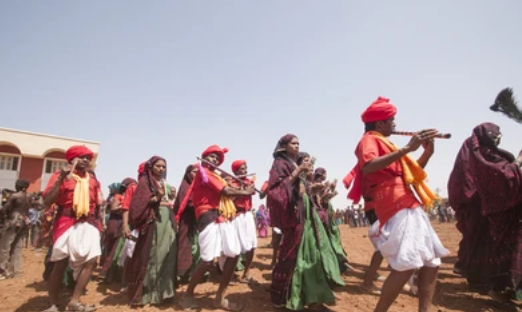Tribe: Bhil
The Bhil tribe is one of the oldest tribal communities in India, with a population of over 12 million people. They are primarily found in the western states of Gujarat, Rajasthan, and Madhya Pradesh, but are also present in other parts of India. Their name comes from the word “veel” which means “bow”. Their primary occupation is agriculture.

Location
The Bhil people are present in various upland regions across multiple states. They can be found from the central Rajasthan’s Ajmer region in the north, all the way down to western Maharashtra’s Thane region in the south. In addition, they are present in the western Madhya Pradesh’s Indore region in the east and southeastern Gujarat’s Surat region in the west.

History
Little is known about the origin of the Bhil people, but they are said to be the oldest inhabitants of the area. A Sanskrit text dating to the very end of the 6th century AD mentions a Bhil chieftain, mounted on an elephant, opposing the passage of another king through the Vindhya Mountains.
During the medieval period, the Bhils came into contact with several ruling dynasties, including the Rajputs, the Mughals, and the Marathas. When the Rajput clans began to settle in Western India, the Bhils went further inland to preserve their independence. The Marathas also historically fought against the Bhils, which also further pushed them to the interiors of the mainland.
Initially, the Bhils resorted to predatory tactics to resist the British invasions, but eventually they changed their strategy. In the 1840s, the Bhil Corps of Mewar aligned with the British, and during the 1857 Mutiny, they continued to support the British. Their objective was to move away from their previous predatory behavior.

Culture
Archaeological studies reveal that Bhils are offshoots of the Eklavya of Mahabharata or Valmiki of Ramayana. The Bhil tribe is agriculturally skilled, living on rear cattle poultry and mostly growing millets like jowar, bajra and ragi. Apart from the language Bhil, they also speak languages like Marathi and Gujarati. Bhil women wear traditional sarees and ghagra, whereas the menfolk wear long frocks, pajamas, and colorful turbans. Both men and women wear brass ornaments.
The Bhils are known for their traditional art forms, including pottery, weaving, and painting. Their most important festival is called Baneshwar, which is celebrated in a large fair with traditional songs, dance, raslila, magic shows, and campfire. Religiously, they are Hindus and worship the Lord Shiva.

